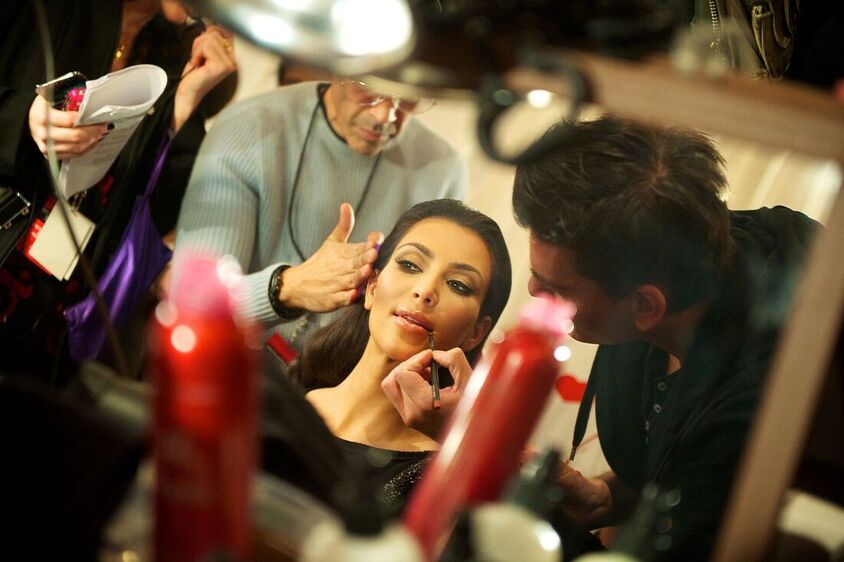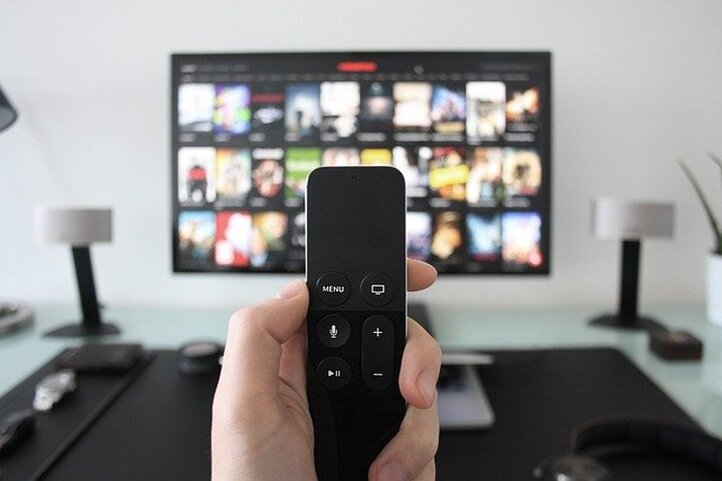The Role of Television in Defining Beauty
In 2011, the Nielsen Company reported that approximately 96.7% of American households own a television. Whether these households choose to watch the news, sitcoms, or thrillers, it is likely that the female anchors, comedians, and actresses who pop up on their screens are the pinnacle of Western female beauty standards. While exceptions exist, the media selects for the most attractive women. In Western society, this traditionally includes women with slim waists and large hips and breasts. For instance, Kim Kardashian and Jennifer Lopez are iconic female celebrities in the United States who fit this ideal and are extremely prevalent in the media.
Researchers hypothesize that the high visibility of these types of women perpetuates Western beauty standards and shapes the beauty ideals of television consumers. Such a hypothesis implies television could be contributing significantly to body dysmorphia and eating disorders, which currently affect around 3% of American adolescents between 13 and 18 years old. Excessive television intake could create standards of beauty which are largely unattainable for many women.
To test this hypothesis, one study researched the impact of television on beauty standards in a remote region of Nicaragua to limit the amount of confounding variables. At the time of the study, this region, the Pearl Lagoon Basin, began developing very rapidly. The area was just being introduced to television, which became its primary source of visual media. The participants who did watch television reported spending their screen time watching telenovelas, Hollywood action movies, music videos, the news, and reality TV, most of which tended to feature picturesque Western women. Telenovelas were the only exception, but Latin American beauty standards also favor thin and curvy body types like the United States. Together, these factors made the Pearl Lagoon Basin a prime location to study the effect of media on body type preferences. Researchers were curious as to whether the spreading of Western beauty ideals through television would change the ideals of the residents of these Nicaraguan villages.
Researchers hypothesize that the high visibility of these types of women perpetuates Western beauty standards and shapes the beauty ideals of television consumers. Such a hypothesis implies television could be contributing significantly to body dysmorphia and eating disorders, which currently affect around 3% of American adolescents between 13 and 18 years old. Excessive television intake could create standards of beauty which are largely unattainable for many women.
To test this hypothesis, one study researched the impact of television on beauty standards in a remote region of Nicaragua to limit the amount of confounding variables. At the time of the study, this region, the Pearl Lagoon Basin, began developing very rapidly. The area was just being introduced to television, which became its primary source of visual media. The participants who did watch television reported spending their screen time watching telenovelas, Hollywood action movies, music videos, the news, and reality TV, most of which tended to feature picturesque Western women. Telenovelas were the only exception, but Latin American beauty standards also favor thin and curvy body types like the United States. Together, these factors made the Pearl Lagoon Basin a prime location to study the effect of media on body type preferences. Researchers were curious as to whether the spreading of Western beauty ideals through television would change the ideals of the residents of these Nicaraguan villages.
Image Source: StockSnap
One aspect of the study compared villages of similar demographics but with differing access to television. The study revealed a correlation between visual media usage and body type preferences. The villages which did have access to television preferred women with lower BMIs and smaller waist-hip ratios than the villages without access to television. Additionally, the researchers investigated a single village over time as it gained greater access to television. The majority of individuals in this study indicated a preference for thinner women during the times when television was most accessible. A third aspect of the study examined how quickly visual media shifted preferences of female body types. The participants of this study came from Nicaraguan villages which completely lacked television access. They were shown images of fashion models and asked to describe their physically ideal women immediately before and after seeing the images. The data shows that within just 15 minutes, visual media was able to alter participants’ physical preferences. In sum, the study found that visual media, in particular television, had the power to quickly change the standards of beauty of these Nicaraguan communities towards Western ideals, but also in favor of larger body size, depending on the images seen.
While it is impossible to accurately extrapolate how American standards of beauty are affected by television, this case study in Nicaragua at least raises awareness of the potential negative effects of excessive television consumption on body image. Additionally, for most Americans, sources of visual media include not only television, but also Instagram, YouTube, and Facebook, which may exacerbate these negative effects. Therefore, it is important to be mindful of the potential triggers of body image issues and recognize when it might be necessary to hit “off” on the remote, close the computer, or set the phone down. So, if ever starting to feel envious of Kim Kardashian or Jennifer Lopez, recognize that this could simply be the fault of the media.
While it is impossible to accurately extrapolate how American standards of beauty are affected by television, this case study in Nicaragua at least raises awareness of the potential negative effects of excessive television consumption on body image. Additionally, for most Americans, sources of visual media include not only television, but also Instagram, YouTube, and Facebook, which may exacerbate these negative effects. Therefore, it is important to be mindful of the potential triggers of body image issues and recognize when it might be necessary to hit “off” on the remote, close the computer, or set the phone down. So, if ever starting to feel envious of Kim Kardashian or Jennifer Lopez, recognize that this could simply be the fault of the media.
Image Source: "Kim Kardashian backstage at The Heart Truths Red Dress Collection 2010" by The Heart Truth is licensed under the public domain
RELATED ARTICLES
|
Vertical Divider
|
Vertical Divider
|
Vertical Divider
|






